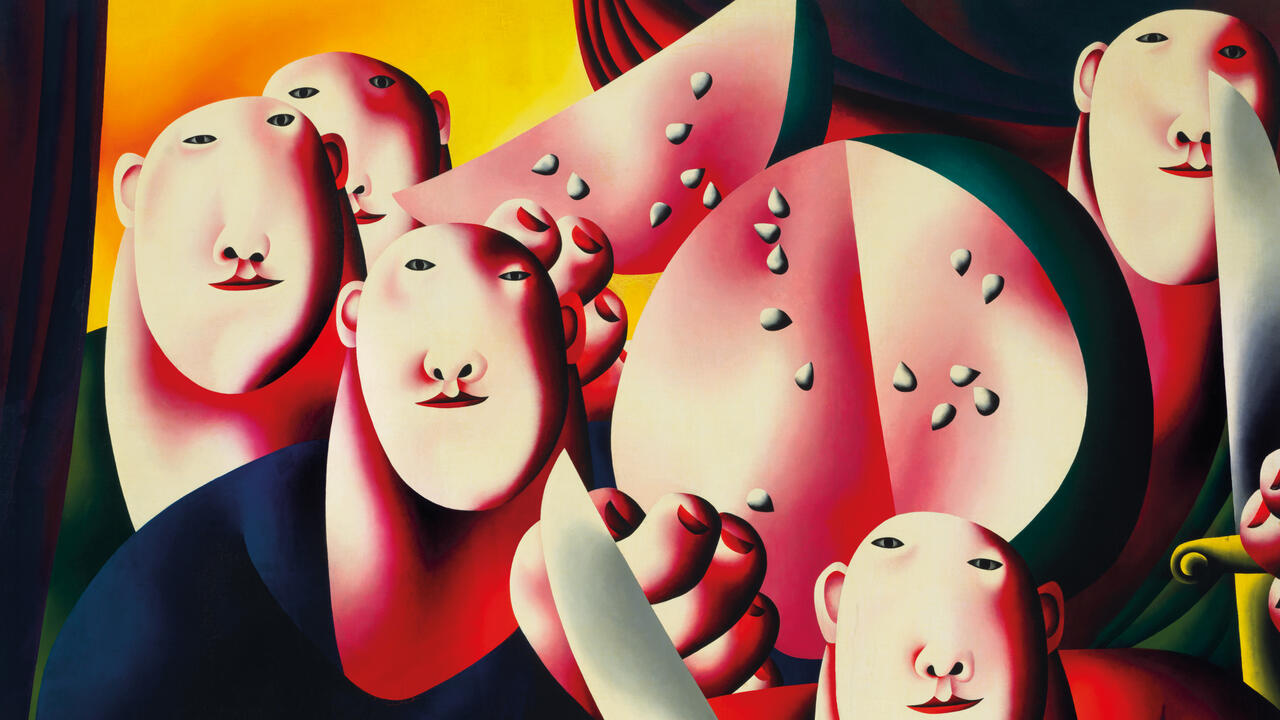Time Travel
Ilya Kabakov’s return to Russia and Moscow’s refurbished Pushkin Museum
Ilya Kabakov’s return to Russia and Moscow’s refurbished Pushkin Museum

I went with a measuring tape in my luggage, like a bespoke tailor calling on a housebound client. Except that I was fitting him to the carved-in-stone proportions of a by no means off-the-rack three-piece. The carved-in-stone part is quite literal, since the grand garment to which I was adjusting the gentleman – or rather his work – was the Pushkin Museum of Fine Arts in Moscow. I cannot divulge the artist’s name – no self-respecting custom cutter would be so indiscreet – but let me just say that he has never been shown in that city. Having been approached about possibly organizing a retrospective of his paintings, my task was to see if it could really be done to their best advantage. After all, a suit that is two sizes too large or two sizes too small will make anyone look the fool.
With the museum’s majestic staircase, classical colonnades and high, ballroom-big galleries, it is easy to picture crowds of elegantly attired 19th-century aristocrats and plutocrats there, milling and swilling in front of old masters. It is likewise easy to see Russia’s freshly minted politicians and oligarchs doing the same. Yet one must still contend with the legacy of Soviet rule, which has made the Pushkin’s pre-Revolutionary precincts the domain of dour guards presided over by an old-line cultural proconsul, who arrived at the museum before Stalin’s death and stands watch over it to this day: Madame – no longer Comrade – Irina Antonova. We have met on several occasions, and I recall one encounter in particular. It was in her office – another palatial chamber – where assistants at their desks hugged the walls while we sat at a table in the centre discussing Ilya Kabakov, whom she pronounced ‘a flash in the pan’. Mme Antonova was already in her 80s then, and Kabakov was around 70, but it was clear that she intended to outlast him to prove her point. Having never before been presented in a public space in his ‘home town’, Kabakov’s work will be the subject of a retrospective at multiple prominent venues around Moscow this autumn. The Pushkin will be among them.
These days change comes slowly in Russia – or jarringly fast. In some cases it is not change at all but the mysterious, if not frankly imperious, reimposition of old paradigms under new management. Not long ago they tore down a famous Stalin-era hotel near Red Square long known for its asymmetrical façade, an anomaly given that Stalinist architecture was relentlessly symmetrical. The reason for the mismatched designs on either side of the entrance was that Lenin’s infallible heir had signed off on two sets of preliminary drawings, and no one dared ask which of the two he had meant to approve since it would have pointed out that he had left the matter in doubt or, worse, that he had been confused. So with the Solomonic wisdom of terrified bureaucrats, half was constructed according to one plan and half according to the other. The reason for rebuilding this lopsided behemoth after having demolished it is doubtless a bureaucratic compromise as well, but so far an enigma.
Another paradoxical sign of the times was the exhibition on view at the Pushkin while I made my calculations. For what I presume to be the first time in that context, the two Futurisms – Russian and Italian – were on comparative display betwixt and between fluted columns, on fabric-covered walls and above variegated marble floors. The graphic and archival materials were of superior quality and interest, while the paintings and sculptures were mostly inferior examples, making the manifesto-driven dynamism of the two politically complicit and politically doomed Utopias look poignantly tentative against the dilapidated but enduring splendour of the site.
During my visit I also scrutinized the recently refurbished Pushkin annexe, of roughly the same vintage but radically different dimensions. There, works by Alexander Rodchenko and Varvara Stepanova were featured in low galleries devoted to private collections on deposit with the state. Other items of interest could be found – a drawing by Mikhail Vrubel, paintings and sketches by Leonid Pasternak (illustrator of Leo Tolstoy and father of Boris) – but by and large clustered works by virtually unknown Russian luminaries were reminiscent of the wan creations by the several incarnations of Kabakov’s archetypal ‘failed artist’, making the nearly domestic scale of the rooms depressingly appropriate. They are the final repository of ‘apartment art’ in its tame, officially sanctioned – as distinct from rebelliously unofficial – styles.
Where my exhibition will take place, if it takes place at all, is hard to imagine. But taking New Russia’s measure, it’s even harder to imagine where modern and contemporary art generally will get out from under the weight of the Old. Perhaps a five-year plan is in order.























